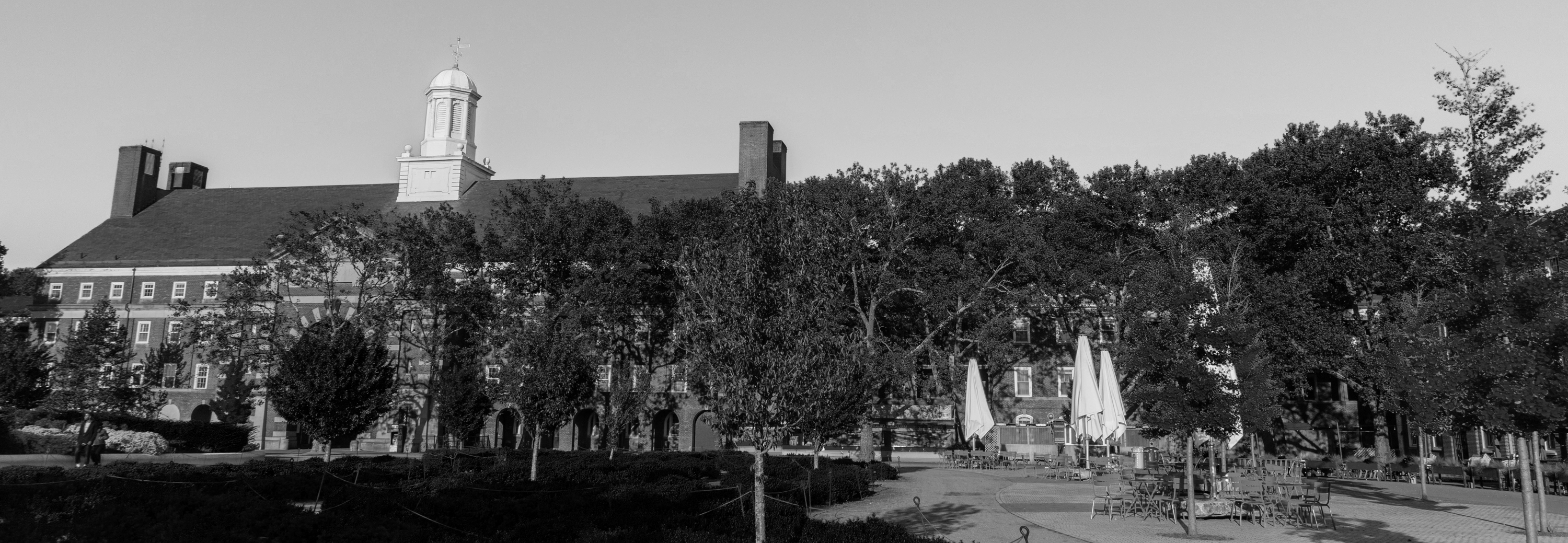
Photo by Chris Stein
Governors Island
Governors Island is a 172-acre (70 ha) island in New York Harbor, approximately 800 yards (732 m) from the southern tip of Manhattan Island and separated from Brooklyn by Buttermilk Channel, approximately 400 yards (366 m). It is part of the borough of Manhattan in New York City. The National Park Service administers a small portion of the north of the island as the Governors Island National Monument, while the Trust for Governors Island operates the remaining 150 acres, including 52 historic buildings. Today, Governors Island is a popular seasonal destination open to the public between May and September with a 43-acre public park completed between 2012 and 2016, free arts and cultural events, and recreational activities. The island is accessed by ferries from Brooklyn and Manhattan. The Lenape of the Manhattan region referred to the island as Paggank ("nut island"), likely after the island's plentiful hickory, oak, and chestnut trees; the Dutch explorer Adriaen Block called it Noten Eylant, a translation, and this was borrowed into English as Nutten Island. The island's current name, made official in 1784, stems from the British colonial era, when the colonial assembly reserved the island for the exclusive use of New York's royal governors. In 1776, during the American Revolutionary War (1775–1783), Continental Army troops raised defensive works on the island, which they used to fire upon British ships before they were taken. From 1783 to 1966, the island was a United States Army post, and later from 1966 to 1996, the island served as a major United States Coast Guard installation. About 103 acres (42 ha) of fill was added to the island by 1912, making the island a 172-acre (70 ha) island
In 1524, Giovanni da Verrazzano saw the then called Paggank island, becoming the first European in record to do so. (Island of Nuts;[3] described above) by the Native Americans. In May 1624, Noten Eylandt ("Island of Nuts") was the landing place of the first settlers in New Netherland. They had arrived from the Dutch Republic with the ship New Netherland under the command of Cornelius Jacobsen May, who disembarked on the island with thirty families in order to take possession of the New Netherland territory. As such, the New York State Senate and Assembly recognize Governors Island as the birthplace of the state of New York, and also certify the island as the place on which the planting of the "legal-political guaranty of tolerance onto the North American continent" took place. In 1633, the fifth director of New Netherland, Wouter van Twiller, arrived with a 104-man regiment on Governors Island—its first use as a military base. Later he operated a farm on the island. He secured his farm by drawing up a deed on June 16, 1637, which was signed by two Lenape, Cacapeteyno and Pewihas, on behalf of their community at Keshaechquereren, situated in what today is New Jersey. New Netherland was conditionally ceded to the English in 1664, and the English renamed the settlement New York in June 1665. By 1674, the British had total control of the island.
TAfter the beginning of the American Revolutionary War, in one night, April 9, 1776, Continental Army General Israel Putnam fortified the island with earthworks and 40 cannons in anticipation of the return of the British Army and navy who had quit New York City the year before. The harbor defenses on the island continued to be improved over the summer, and on July 12, 1776, engaged HMS Phoenix and HMS Rose as they made a run up the Hudson River to the Tappan Zee. The colonists' cannon inflicted enough damage to make the British commanders cautious of entering the East River, which later contributed to the success of General George Washington's retreat across it from Brooklyn into Manhattan after the Battle of Long Island (also known as the Battle of Brooklyn), the British Army effort to take Brooklyn Heights overlooking Manhattan and the largest battle of the entire war. The Continental Army forces collapsed after being flanked and eventually withdrew from Brooklyn and from Governors Island as well, and the British occupied it in late August. From September 2 to 14, the new British garrison would engage volleys with Washington's guns on the battery in front of Fort George in Manhattan. The fort, along with the rest of New York City, was held by the British for the rest of the war until Evacuation Day at the end of the war in 1783.
Article taken from Wikipedia

Creative Commons Attribution 4.0 International License